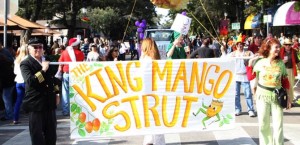There are no other Everglades in the world.
-Marjory Stoneman Douglas
Miami was built upon a reef. The reef died and turned to rock, hundreds of miles of rock, cracked and crazed and looking like it’s been through war. Each jag and crevice can shelter plant and animal life, all in turn nourished by and flourishing within a slow-moving river hundreds of miles wide that empties from Lake Okeechobee into the Florida Bay.
Stories abound of the early men who carved the Tampa – Miami (Tamiami) Trail, fighting off gators and snakes the whole long way, but tourists who worry confuse the issue: alligators rarely charge, and a moccasin bite, while cause for a visit to the doctor, cannot compare with the that of the snakes outdoorsmen face in the other wild places of the world.
The real danger in the Everglades is the sun. The swamp shows no mercy in the summer, and even a seasoned ‘Gladesman can find himself turned around in the prairie, driven mad by bugs, enervated from hours of slogging through the marl, with no promise of clean water or shade for hours more.
Most people have the wrong idea about the ‘Glades. They expect a kind of Jurassic Park with smaller dinos. Well, our gators are as old as dinosaurs (our cycads, much, much older), and I’ve been trying for years to teach the crocodiles to eat lawyers, but the grassland river is far sparer a landscape than that of the old tropical forests. A better analogue might be the Mara of the Maasai: our waking swamp shares at least a passing resemblance to the Serengeti at dawn, though with no big cats (and thanks to cars, houses, and pythons, far fewer small cats) to break the monotony.
I love the ‘Glades. I love them with the faith one must show to one’s own. I warn the would-be visitor, though: while beautiful, rich, and strange, they are not always easy.



